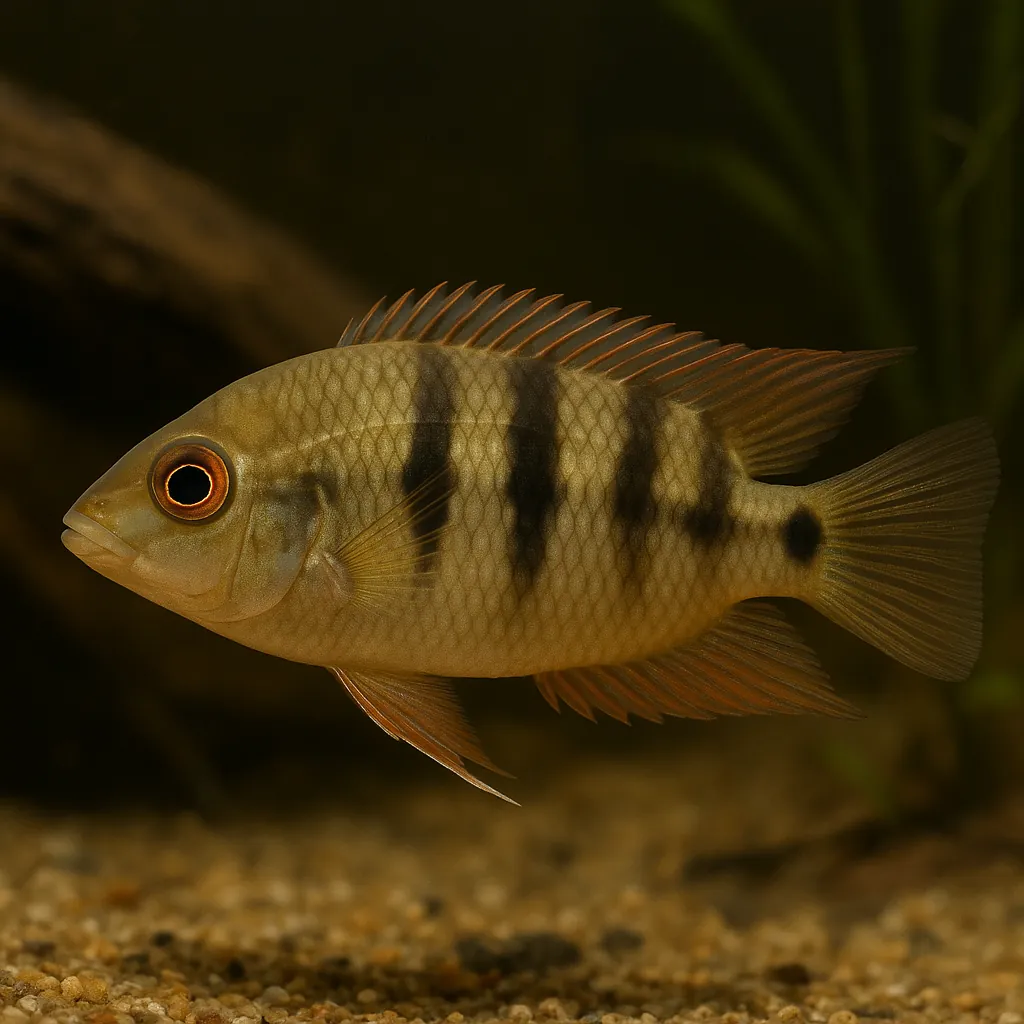
Dwarf flag cichlid
Introduction
The Dwarf Flag Cichlid (Laetacara curviceps) is a captivating freshwater fish native to South America's Amazon Basin. Renowned for its vibrant colors and peaceful demeanor, this species has become a favorite among aquarists seeking a harmonious addition to their community tanks. With proper care, the Dwarf Flag Cichlid can thrive, offering both beauty and engaging behavior to hobbyists.
What makes the Dwarf Flag Cichlid appealing to aquarists?
Its striking coloration, manageable size, and gentle temperament make it an excellent choice for both novice and experienced fishkeepers.
Is the Dwarf Flag Cichlid suitable for beginners?
Yes, with its peaceful nature and relatively straightforward care requirements, it's well-suited for those new to fishkeeping.
Care and Environment
Providing an optimal environment is crucial for the health and well-being of the Dwarf Flag Cichlid. Here's a comprehensive guide to their care:
What is the minimum tank size for a Dwarf Flag Cichlid?
A minimum of 30 gallons (114 liters) is recommended for a pair or small group, ensuring ample space for swimming and territory establishment.
What are the ideal water parameters?
Maintain a temperature between 74–82°F (23–28°C), a pH of 6.0–7.0, and soft to moderately hard water.
How should the tank be decorated?
Incorporate fine gravel or sandy substrate, along with plenty of plants, driftwood, and rocks to create hiding spots and territories. Floating plants or dense plant cover also help provide security.
What should I feed my Dwarf Flag Cichlid?
They are omnivorous and thrive on a balanced diet of high-quality pellets, flakes, and frozen foods like bloodworms, daphnia, and brine shrimp. Supplement their diet with blanched vegetables such as spinach, zucchini, or peas for added nutrition. Feed 2–3 times per day to ensure proper growth and health.
Are there any specific challenges in keeping Dwarf Flag Cichlids?
They can be sensitive to poor water quality, so regular water changes and high-quality filtration are crucial. Additionally, they may show territoriality during breeding periods.
Origin and Habitat
Native to the Amazon Basin in Brazil, the Dwarf Flag Cichlid inhabits slow-moving rivers, streams, ponds, and lakes. These environments are characterized by clear, transparent water with low flow rates and substrates typically comprising a layer of leaf litter.
What type of vegetation is found in their natural habitat?
They are often found among macrophytes including Cabomba, Myriophyllum, and Eichhornia species.
How does their natural habitat influence their care in captivity?
Replicating these conditions in the aquarium, such as providing ample hiding spots and maintaining appropriate water parameters, helps ensure their well-being.
Temperament and Compatibility
The Dwarf Flag Cichlid is known for its peaceful and social nature, making it suitable for community tanks with other small to medium-sized, non-aggressive fish. Ideal tank mates include tetras, rasboras, small catfish (like Corydoras), and peaceful barbs. However, they may show territoriality towards other cichlids or during breeding periods.
Can Dwarf Flag Cichlids be kept with other cichlids?
It's best to avoid housing them with more aggressive cichlids, as they can be easily bullied.
How can I minimize aggression during breeding?
Ensure the aquarium has enough space and hiding spots to reduce stress and potential aggression.
Interesting Facts
The Dwarf Flag Cichlid is often referred to as the "smiling acara" due to curved stripes near the mouth region that resemble a smile.
How do they care for their offspring?
Both parents perform brood care and defend the territory, with fry becoming free-swimming in about 8–10 days.
Are there different color variations of Dwarf Flag Cichlids?
Yes, there are populations that differ in coloration, known as site variants.
Sources
All information in this article has been gathered from the following reputable sources:
Overview
Recommended Tank Size 30.1 Gallons (for a pair or small group) |
Minimum Group Size 2 |
Minimum Tank Volume 30.1 Gallons |
Maximum Adult Length 3 inches |
Average Adult Length 3 inches |
Shoaling (6+ required) No |
Preferred Water Type Freshwater, soft to moderately hard, slightly acidic to neutral |
Temperature Range (°C) 23–28 |
pH Range 6.0–7.0 |
Water Hardness (dGH) Soft to moderately hard |
Typical Lifespan (years) 5 years |